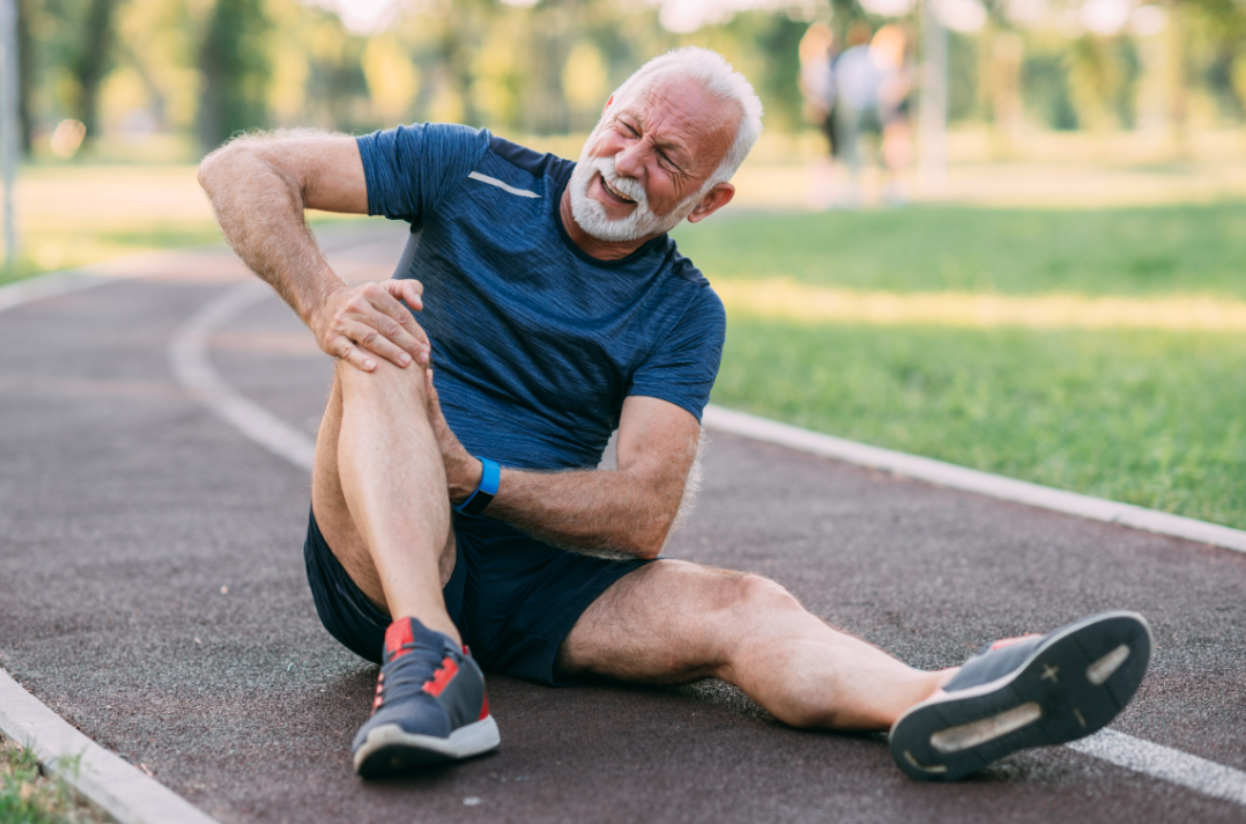
Jump to section
Patellofemoral Pain Syndrome, commonly known as runner's knee, is a common cause of knee pain that our podiatrists see and treat. Having the right care at the right time is important in helping prevent runner’s knee from recurring and continuing to cause ongoing issues.
Patellofemoral pain syndrome causes pain and discomfort around the patella (kneecap) and its surrounding structures, particularly during activities that involve repetitive bending and straightening at the knee joint. This condition is often referred to as ‘runner's knee’ due to being commonly seen in runners, though it can affect anyone across all different types of physical activities - and even those involved in minimal exercise but may have jobs that require them to regularly go up and down stairs or ladders.
There are usually several contributing factors to patellofemoral pain, which vary from person to person. It is thought to be related to the patella mistracking, causing it to move irregularly as the knee bends and straightens. Some common contributing or causative factors include:
A history of knee surgery, particularly surgery that works to repair the anterior cruciate ligament (ACL) by grafting the patellar tendon can increase the risk of patellofemoral pain. It's important to note that while these factors can increase the risk of developing patellofemoral pain, the condition's exact cause may be difficult to pinpoint.
The main symptom of patellofemoral pain is pain around or behind the kneecap, which may be described as dull, aching, or sometimes sharp. The pain is typically aggravated by activities that involve flexing the knee, typically being more pronounced during activities like descending stairs, squatting, kneeling or running downhill. Symptoms may also worsen after prolonged periods of sitting with bent knees. Swelling may or may not be experienced, and depending on the severity of the problem, the pain may continue to linger during rest.
Diagnosing patellofemoral pain syndrome can be done confidently and effectively by your podiatrist. It involves assessing your medical history, completing a physical exam that looks closely at the knee and your gait, and sometimes performing imaging studies if it is suspected that other knee damage may have occurred.
Treating runner’s knee pain starts with alleviating the painful symptoms and understanding the cause of the problem. Before you get in to see your podiatrist, following the RICE (rest, ice, compression, elevation) protocol at home can help in managing your pain, as can the use of non-steroidal anti-inflammatory medications if it is safe for you to do so.
Once you’ve been assessed by our podiatry team, we’ll create a tailored treatment plan to not only relieve your pain and discomfort, but prevent the problem from recurring again throughout your exercise or daily life. To achieve this, we may use:
Preventing patellofemoral pain syndrome involves a combination of strategies, including maintaining proper training techniques, gradually increasing your activity levels, and paying attention to your lower limb biomechanics when exercising or working. Strengthening the quadriceps, hip muscles, and core can help maintain proper patellar alignment. Ensuring that you’re wearing good footwear, especially for runners, and using your custom foot orthotics if you have them can provide additional support. Incorporating adequate warm-up and cool-down routines, as well as cross-training to avoid overuse, can also help.
The outlook for those diagnosed with patellofemoral pain is generally positive. With appropriate treatment and adherence to rehabilitation
programs, most people experience a reduction in pain and improvement in function within a matter of weeks. Recovery timelines can vary based
on the severity of the condition and adherence to treatment protocols. Engaging in ongoing strength and flexibility exercises, as well as
maintaining proper movement mechanics, can help prevent recurrences of patellofemoral pain..
Can patellofemoral pain affect people who aren't athletes?
Yes, while runner’s knee is commonly associated with those that are physically active including runners, it can affect individuals who engage in various physical activities or even those with sedentary lifestyles. Factors such as muscle imbalances, anatomical variations, and movement patterns can contribute to developing patellofemoral pain in non-athletic populations.
Is surgery a common treatment for patellofemoral pain?
Surgery is generally considered a last resort for patellofemoral pain and is reserved for cases that do not respond to conservative treatments. Surgical options may include realigning the patella, addressing structural abnormalities, or addressing soft tissue issues. However, the majority of patellofemoral pain cases can be effectively managed without surgery.
Can patellofemoral pain occur suddenly or does it develop gradually?
Patellofemoral pain can develop both gradually and suddenly. Some individuals may experience a sudden onset of pain due to activities that place excessive stress on the patellofemoral joint. In other cases, the pain may gradually worsen over time as a result of repetitive movements and underlying contributing factors.
Can improper footwear contribute to patellofemoral pain?
Yes, improper footwear can contribute to patellofemoral pain. Shoes that lack proper support or do not provide adequate cushioning can lead to altered biomechanics during movement, potentially affecting patellar tracking and increasing the risk of developing patellofemoral pain syndrome.
Can patellofemoral pain affect both knees simultaneously?
Yes, patellofemoral pain can affect both knees simultaneously, although it's not uncommon for one knee to be more symptomatic than the other. Bilateral patellofemoral pain might occur due to similar underlying factors affecting both knees, such as muscle imbalances, poor movement mechanics, or anatomical variations.
| Monday | 7:40am - 6:00pm |
| Tuesday | 7:40am - 6:00pm |
| Wednesday | 7:40am - 6:00pm |
| Thursday |
7:40am - 6:00pm |
| Friday | TEMP CLOSED |
| Saturday | CLOSED |
| Sunday | CLOSED |
Ground Floor, 344 Queen Street,
Brisbane City QLD 4000
| Monday | 7:40am - 6:00pm |
| Tuesday | 7:40am - 6:00pm |
| Wednesday | 7:40am - 6:00pm |
| Thursday |
7:40am - 6:30pm |
| Friday | 7:40am - 5:00pm |
| Saturday | 7:40am - 4:30pm |
| Sunday | CLOSED |
Newmarket Village, 114/400 Newmarket Rd, Newmarket QLD 4051